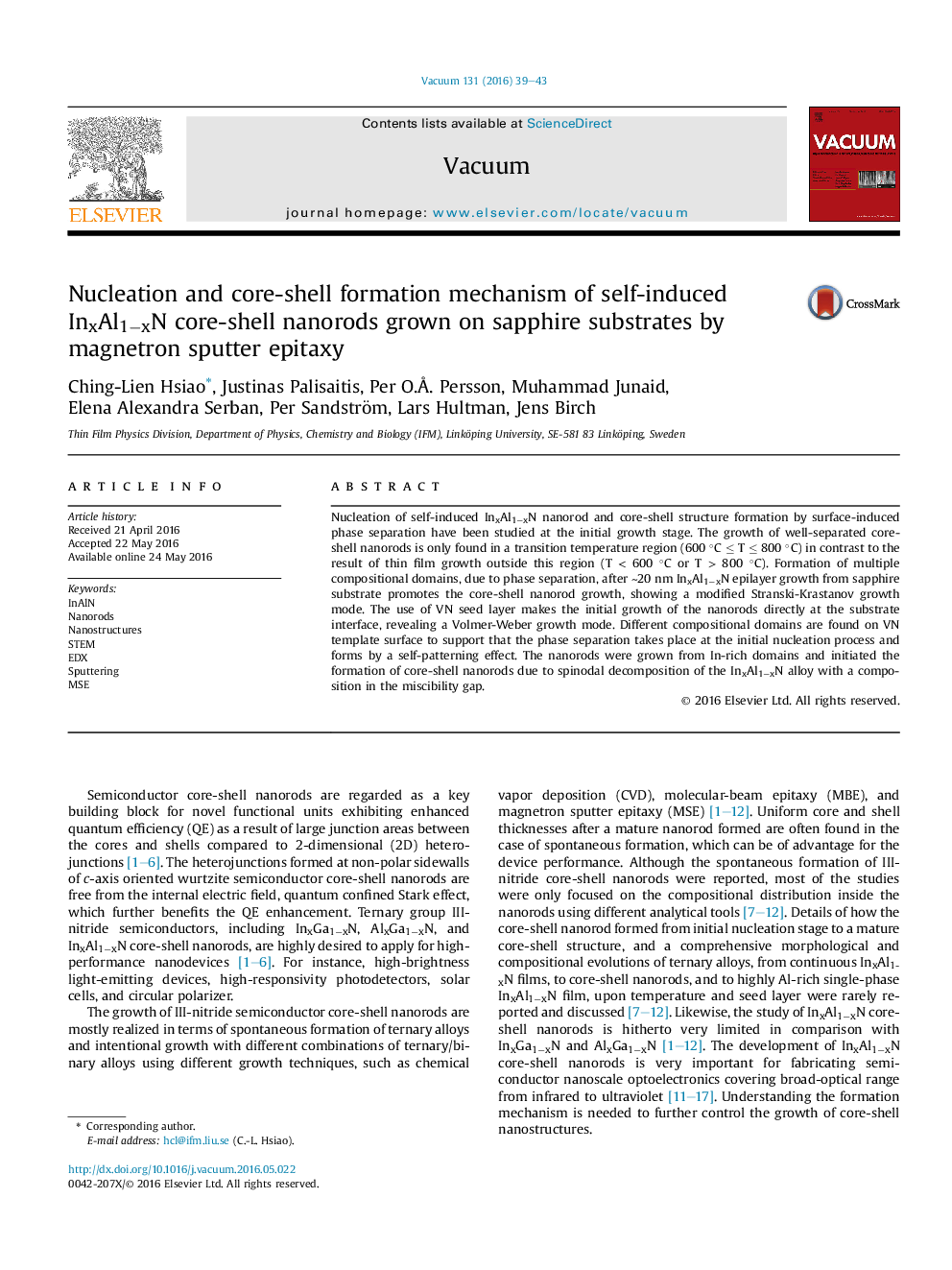| Article ID | Journal | Published Year | Pages | File Type |
|---|---|---|---|---|
| 1689653 | Vacuum | 2016 | 5 Pages |
•A comprehensive study on the structural evolution of InxAl1−xN nanorods and thin films grown by magnetron sputter epitaxy.•The formation mechanism of self-induced core-shell InxAl1−xN nanorod structure is reported.•The morphological and compositional evolutions of ternary alloys upon temperature and seed layer are reported.•Two different growth modes, Stranski-Krastanov and Volmer-Weber, are proposed.
Nucleation of self-induced InxAl1−xN nanorod and core-shell structure formation by surface-induced phase separation have been studied at the initial growth stage. The growth of well-separated core-shell nanorods is only found in a transition temperature region (600 °C ≤ T ≤ 800 °C) in contrast to the result of thin film growth outside this region (T < 600 °C or T > 800 °C). Formation of multiple compositional domains, due to phase separation, after ∼20 nm InxAl1−xN epilayer growth from sapphire substrate promotes the core-shell nanorod growth, showing a modified Stranski-Krastanov growth mode. The use of VN seed layer makes the initial growth of the nanorods directly at the substrate interface, revealing a Volmer-Weber growth mode. Different compositional domains are found on VN template surface to support that the phase separation takes place at the initial nucleation process and forms by a self-patterning effect. The nanorods were grown from In-rich domains and initiated the formation of core-shell nanorods due to spinodal decomposition of the InxAl1−xN alloy with a composition in the miscibility gap.
